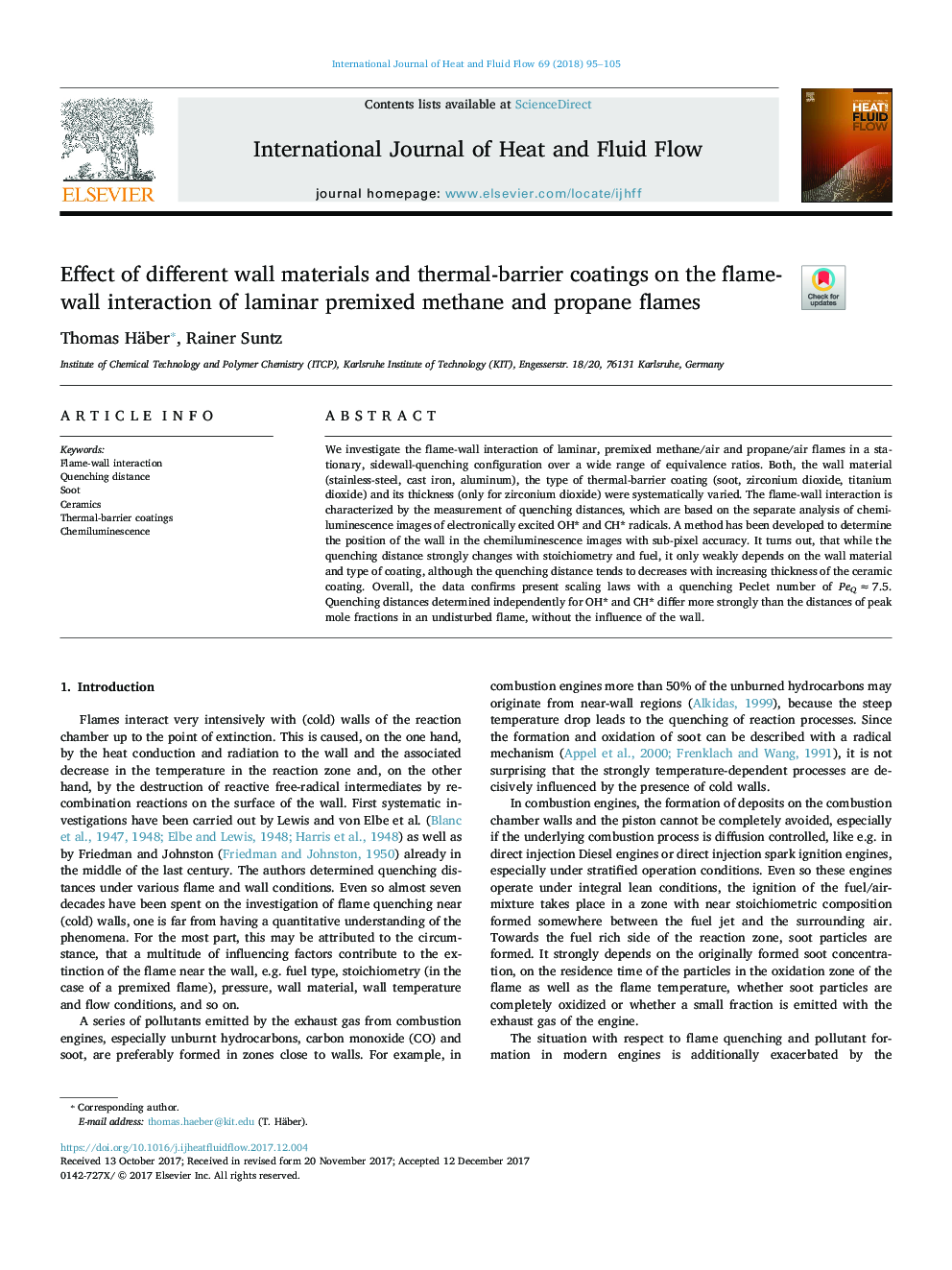| Article ID | Journal | Published Year | Pages | File Type |
|---|---|---|---|---|
| 7053541 | International Journal of Heat and Fluid Flow | 2018 | 11 Pages |
Abstract
We investigate the flame-wall interaction of laminar, premixed methane/air and propane/air flames in a stationary, sidewall-quenching configuration over a wide range of equivalence ratios. Both, the wall material (stainless-steel, cast iron, aluminum), the type of thermal-barrier coating (soot, zirconium dioxide, titanium dioxide) and its thickness (only for zirconium dioxide) were systematically varied. The flame-wall interaction is characterized by the measurement of quenching distances, which are based on the separate analysis of chemiluminescence images of electronically excited OH* and CH* radicals. A method has been developed to determine the position of the wall in the chemiluminescence images with sub-pixel accuracy. It turns out, that while the quenching distance strongly changes with stoichiometry and fuel, it only weakly depends on the wall material and type of coating, although the quenching distance tends to decreases with increasing thickness of the ceramic coating. Overall, the data confirms present scaling laws with a quenching Peclet number of PeQâ¯ââ¯7.5. Quenching distances determined independently for OH* and CH* differ more strongly than the distances of peak mole fractions in an undisturbed flame, without the influence of the wall.
Related Topics
Physical Sciences and Engineering
Chemical Engineering
Fluid Flow and Transfer Processes
Authors
Thomas Häber, Rainer Suntz,
